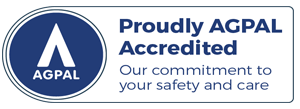The COVID-19 pandemic has left a deep mark on many individuals, not only physically but also mentally. As the world continues to adapt to the aftermath of the pandemic, an increasing number of people are facing psychological challenges, including anxiety, depression, and symptoms similar to Post-Traumatic Stress Disorder (PTSD). For those who have experienced the virus itself or the trauma of loss, isolation, and fear, the mental and emotional toll can be significant. While much attention has been given to physical recovery from COVID-19, the mental health effects are equally pressing.
One promising approach to managing PTSD symptoms—whether post-COVID or arising from other trauma—comes from breath-based training protocols. Research suggests that specific breathing exercises can provide relief by promoting relaxation, reducing hyperarousal, and modulating the autonomic nervous system, which plays a crucial role in our stress responses. I have been working with a number of clients to explore the potential of breath training protocols, such as functional breath retraining, in supporting recovery from post-COVID PTSD and am seeing some promising results.
The Role of Breath Training in PTSD Recovery
Breathing exercises are not just simple practices—they can be powerful tools in regulating the body’s stress response. In the context of PTSD, trauma often leads to an overstimulated nervous system, characterised by heightened states of arousal, anxiety, and hypervigilance. This can be particularly problematic for individuals who have been affected by the trauma of COVID-19, as the virus itself, as well as the social and emotional consequences of the pandemic, can exacerbate feelings of fear and helplessness.
Functional Breath Retraining: A Comprehensive Approach to Healing
One effective strategy for managing PTSD symptoms is functional breath retraining, a method designed to optimise breathing patterns for better emotional and physical well-being. How we breathe day to day has implications on the function of our body, but also plays a significant role in how we think, feel and act.
Functional breath retraining focuses on teaching individuals how to breathe more efficiently by promoting proper breathing muscle engagement, slower breathing rate and greater tolerance to the sensations of air hunger. Not only that, but the way we posture our tongue, mouth and head can impact the way we are breathing and alter our breathing throughout the day, depending on what we are doing.
Most of us have no idea about how we are breathing during the fluctuations of our day. This is why conducting an initial comprehensive assessment with my clients is crucial for understanding the patterns of breathing and what the triggers are for those fluctuations in the breathing patterns.
The information gathered in the assessment forms the foundation of the 8-week training program. This approach to retraining breathing behaviour helps reset the nervous system and reduce symptoms of hyperarousal, anxiety, and stress, which are common in PTSD.
Through functional breath retraining, individuals learn to regulate their breath in a way that engages the parasympathetic nervous system, which is responsible for the body’s “rest and digest” functions. This balance is crucial for anyone dealing with PTSD, as it helps counter the overactive fight-or-flight response that often accompanies traumatic memories and stress.
What this means in everyday life is a wider buffer is formed when dealing with a stressful situation. This can be felt in ways such as the body is more relaxed when dealing with the situation, thus meaning the mind is calmer and able to make more rational decisions. Plus, as the body learns to regulate between flight and rest and digest, it becomes more practiced at re-settling after dealing with a stressful or more stimulating experience.
Functional breath retraining has shown promising results in improving heart rate variability (HRV), an important indicator of relaxation and emotional regulation. By improving HRV, breath retraining helps to bring the body’s autonomic nervous system back into balance, reducing the physical symptoms of PTSD and promoting mental clarity and emotional resilience.
Slow Breathing and Heart Rate Variability (HRV)
I like to use Heart Rate Variability during my sessions with clients as it provides real-time feedback, allowing them to observe the physiological changes that occur as they adjust their breathing.
Heart Rate Variability (HRV) refers to the natural variations in time between consecutive heartbeats. Rather than maintaining a perfectly steady rhythm, a healthy heart dynamically adjusts its rate in response to physiological and environmental changes. Higher HRV is generally associated with greater flexibility in the autonomic nervous system, indicating an enhanced ability to shift between states of stress (sympathetic activation) and relaxation (parasympathetic activation). Lower HRV, on the other hand, is often linked to chronic stress, anxiety, and an overactive sympathetic nervous system.
For individuals recovering from post-COVID PTSD, improving HRV through breath training is particularly beneficial. PTSD can lead to a dysregulated autonomic nervous system, keeping the body in a persistent state of hyperarousal or anxiety. By training the breath to be slower and more rhythmic, especially by extending the exhalation phase, individuals can stimulate the parasympathetic nervous system, fostering relaxation and emotional resilience.
Studies have demonstrated that slow breathing patterns, particularly those emphasizing a low inhalation-to-exhalation (i/e) ratio, can significantly enhance HRV. Longer exhalations promote vagal tone—the activity of the vagus nerve, which is responsible for parasympathetic activation—resulting in reduced stress responses, improved emotional regulation, and a greater ability to handle triggers without excessive physiological reactivity.
For some individuals, slow breathing may initially feel uncomfortable, as increased CO₂ levels can trigger sensations of air hunger or mild anxiety. However, breath retraining helps individuals gradually adapt to these sensations, building tolerance and reinforcing a calmer physiological state over time. By integrating HRV-focused breathing techniques into their recovery, clients gain a practical and evidence-based tool for managing PTSD symptoms, reducing intrusive thoughts, and regaining a sense of control over their nervous system.
The Potential Benefits for Post-COVID PTSD
While there is no specific research addressing “post-COVID PTSD,” the principles behind breathing-based interventions are highly applicable to those recovering from COVID-19 trauma. I have been using this technique with clients at The Health Lodge and seen some promising improvements in the clients’ sleep, focus, productivity and ability to emotionally regulate and cope with stress.
Importantly, functional breath retraining is non-invasive and can be practiced by individuals at their own pace, making it an accessible option for a wide range of people. Moreover, the low barrier to entry and the evidence supporting its efficacy in trauma recovery make it a valuable resource for those looking to heal from the psychological effects of COVID-19.
How it works
The process of the breath training begins with a comprehensive 1-hour breathing assessment, evaluating lifestyle factors, medical history, and breathing mechanics to identify inefficiencies. From this, a structured individualised 8-week training program is developed, focusing on:
- Optimizing breathing mechanics through proper diaphragm engagement
- Slowing the breath rate to improve CO₂ tolerance, heart rate variability and autonomic balance
- Addressing oral posture (tongue, mouth, and head positioning) to support consistent, functional breathing throughout daily activities and sleep
If you feel you could benefit from functional breath retraining, contact The Health Lodge and book an assessment with Sal Howe.



